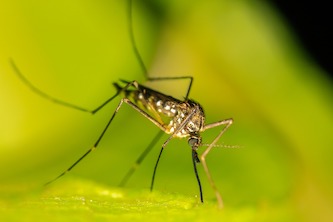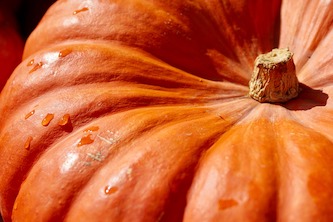The US Food and Drug Administration has given the green light to the first-ever vaccine for chikungunya, a disease spread by mosquitoes. Chikungunya causes fever and joint pains and can be deadly for newborns. The FDA’s approval is expected to speed up the vaccine’s distribution worldwide. This year, about 440,000 cases of chikungunya have been reported, with 350 deaths, and there’s no specific medicine to treat it. South America and South Asia have had the most cases this year.
The vaccine, called Ixchiq, is approved for people aged 18 and up who are at high risk of getting the disease. It was made by Valneva in Europe and is given in just one shot. A senior FDA official, Peter Marks, said chikungunya can cause serious illness and long-term health problems, especially for older adults and people with existing medical conditions. Since 2008, at least five million cases of chikungunya have been reported, with symptoms like rashes, headaches, and muscle pain. Joint pains can last for months or even years.
People in tropical and subtropical parts of Africa, Southeast Asia, and some areas of the Americas are at the highest risk of getting the disease because mosquitoes carrying the chikungunya virus are common there. But the FDA said the virus has spread to new places, leading to more cases worldwide. Brazil has reported the most cases this year, with 218,613, while India has reported over 93,000 cases, including a big outbreak in the capital, Delhi, in 2016.
Original news source: Chikungunya vaccine: US approves first shot against mosquito-borne virus (BBC)
Listen
Slow
Normal
Fast
Group or Classroom Activities
Warm-up Activities:
– News Summary
Instructions: Students will be divided into small groups. Each group is tasked with summarizing the article in their own words, aiming for a concise summary of no more than four sentences. They should focus on the main points: the FDA approval, the impact of chikungunya, and the vaccine’s global significance. Afterward, each group will present their summary to the class.
– Opinion Poll
Instructions: Create a list of statements about the chikungunya vaccine and its distribution, such as “The FDA’s approval will significantly decrease the number of chikungunya cases globally.” Students will walk around the room and poll their classmates, recording whether they agree or disagree with each statement. After polling, discuss the results as a class and examine the reasons behind the various opinions.
– Vocabulary Pictionary
Instructions: Write down key vocabulary from the article on slips of paper (e.g., vaccine, distribution, symptoms, tropical, subtropical, outbreak). Divide the class into two teams. Members take turns drawing a vocabulary word for their team to guess within a set time limit. The team with the most correct guesses wins.
– Speed Summarizing
Instructions: Pair up students and give them 3 minutes to discuss the article and then individually write a summary of the key points in just 60 seconds. After they finish, they will exchange their summaries with their partner to read and provide feedback on clarity and completeness.
– Future Predictions
Instructions: Students will individually write down their predictions about the future impact of the chikungunya vaccine based on the information in the article. They should consider questions like: How will the vaccine change the number of cases and deaths? Will it become widely available in all at-risk areas? After writing, students will share their predictions with a partner and discuss the likelihood and potential obstacles to their forecasts.
Comprehension Questions:
1. What disease is the new vaccine from the US Food and Drug Administration designed to prevent?
2. What are the symptoms of chikungunya mentioned in the article?
3. How many cases of chikungunya have been reported this year, and how many deaths have occurred?
4. What is the name of the vaccine approved for chikungunya, and which company manufactured it?
5. For which age group is the Ixchiq vaccine approved?
6. What did Peter Marks, a senior FDA official, say about the effects of chikungunya?
7. Which regions of the world are most at risk for the chikungunya virus, according to the article?
8. Which two countries have reported the highest numbers of chikungunya cases this year?
Go to answers ⇩
Listen and Fill in the Gaps:
The US Food and Drug Administration has given the green (1)______ to the first-ever vaccine for chikungunya, a disease spread by (2)______. Chikungunya causes fever and (3)______ pains and can be deadly for newborns. The FDA’s approval is expected to (4)______ up the vaccine’s distribution worldwide. This year, about 440,000 cases of chikungunya have been reported, with 350 deaths, and there’s no specific medicine to treat it. (5)______ America and South Asia have had the most cases this year.
The vaccine, called (6)______, is approved for people aged 18 and up who are at high risk of getting the disease. It was made by Valneva in Europe and is given in just one shot. A (7)______ FDA official, Peter Marks, said chikungunya can cause serious (8)______ and long-term health problems, especially for older adults and (9)______ with existing medical (10)______. Since 2008, at least five million cases of chikungunya have been reported, with symptoms like rashes, headaches, and muscle pain. Joint pains can last for (11)______ or even years.
People in tropical and subtropical parts of Africa, Southeast Asia, and some (12)______ of the Americas are at the highest risk of getting the disease because mosquitoes carrying the chikungunya (13)______ are (14)______ there. But the FDA said the virus has (15)______ to new places, leading to more cases worldwide. Brazil has reported the most cases this year, with 218,613, while India has reported over 93,000 cases, including a big (16)______ in the capital, Delhi, in 2016.
Go to answers ⇩
Discussion Questions:
Students can ask a partner these questions, or discuss them as a group.
1. What is a vaccine and why do you think it’s important?
2. How would you feel if a new disease started spreading in your area?
3. Do you like the idea of getting vaccinated with just one shot? Why or why not?
4. Do you think vaccines should be required for everyone? Why or why not?
5. Have you or someone you know ever had a disease spread by mosquitoes? What was it like?
6. What do you think are the best ways to protect yourself from mosquito-borne diseases?
7. Why do you think newborns might be more at risk for diseases like chikungunya?
8. How do you think people in countries with lots of mosquitoes manage the risk of getting bitten?
9. Do you believe that vaccines can cause serious side effects? Why or why not?
10. What do you think about the fact that some diseases have no specific medicine to treat them?
11. Have you heard of chikungunya before reading this article? What was your first reaction to learning about it?
12. Why do you think the FDA’s approval of a vaccine can speed up its distribution worldwide?
13. Do you think older adults and people with medical conditions should be more cautious about diseases like chikungunya? Why?
14. What are your thoughts on diseases that can cause long-term health problems, like joint pains that last for years?
15. How do you feel about the fact that viruses can spread to new places and affect more people?
Individual Activities
Vocabulary Meanings:
Match each word to its meaning.
Words:
1. vaccine
2. chikungunya
3. FDA
4. distribution
5. Valneva
6. symptoms
7. mosquitoes
8. outbreak
Meanings:
(a) The company that made the chikungunya vaccine
(b) The US government agency that approves medicines
(c) A disease spread by insects that causes fever and joint pains
(d) A substance that helps the body fight diseases
(e) The process of giving out something to many people
(f) Signs that show a person has a particular illness
(g) A sudden increase in the number of cases of a disease
(h) Insects that can spread diseases like chikungunya
Go to answers ⇩
Multiple Choice Questions:
1. What is the first-ever vaccine for chikungunya called?
(a) MosquitoGuard
(b) ChikuStop
(c) FeverFree
(d) Ixchiq
2. How many cases of chikungunya have been reported this year?
(a) 200,000
(b) 600,000
(c) 1 million
(d) 440,000
3. Who is at high risk and approved to receive the chikungunya vaccine?
(a) Children under 12
(b) People aged 18 and up
(c) Pregnant women
(d) Elderly people over 80
4. What are the symptoms of chikungunya?
(a) Cough, runny nose, and sore throat
(b) Stomach ache and vomiting
(c) Fever, joint pains, rashes, headaches, and muscle pain
(d) Dizziness and fatigue
5. Where are people at the highest risk of getting chikungunya?
(a) Europe and Australia
(b) Tropical and subtropical parts of Africa, Southeast Asia, and some areas of the Americas
(c) North America and Antarctica
(d) Central Asia and the Middle East
6. How many cases of chikungunya has Brazil reported this year?
(a) 100,000
(b) 500,000
(c) 218,613
(d) 50,000
7. What company made the chikungunya vaccine?
(a) Valneva
(b) MosquitoShield
(c) ChikuCare
(d) FeverFix
8. What did the FDA say about the spread of the chikungunya virus?
(a) It has spread to new places, leading to more cases worldwide
(b) It has only affected South America and South Asia
(c) It is not spreading at all
(d) It is only affecting Africa and Southeast Asia
Go to answers ⇩
True or False Questions:
1. Brazil and India have reported the most cases of chikungunya this year.
2. This year, there have been about 440,000 reported cases of chikungunya, with 350 deaths.
3. The US FDA has approved the first vaccine for chikungunya, a disease spread by mosquitoes.
4. Mosquitoes carrying the chikungunya virus are rare in tropical and subtropical parts of Africa, Southeast Asia, and some areas of the Americas.
5. The vaccine’s approval is expected to make it available worldwide faster.
6. Chikungunya cannot cause fever and joint pains and cannot be deadly for newborns.
7. The vaccine, called Ixchiq, is not approved for people aged 18 and older who are at high risk of getting the disease.
8. Chikungunya cannot cause serious illness and long-term health problems, especially for older adults and people with existing medical conditions.
Go to answers ⇩
Write a Summary:
Write a summary of this news article in two sentences.
Check your writing now with the best free AI for English writing!
Writing Questions:
Answer the following questions. Write as much as you can for each answer.
Check your answers with our free English writing assistant!
1. What is chikungunya and how is it spread?
2. How many chikungunya cases and deaths have been reported this year?
3. Who is eligible to receive the new Ixchiq vaccine?
4. What are some of the long-term effects of chikungunya mentioned in the article?
5. Which two countries have experienced the highest number of chikungunya cases this year?
Answers
Comprehension Question Answers:
1. What disease is the new vaccine from the US Food and Drug Administration designed to prevent?
The new vaccine is designed to prevent chikungunya, a disease spread by mosquitoes.
2. What are the symptoms of chikungunya mentioned in the article?
The symptoms of chikungunya mentioned in the article include fever, joint pains, rashes, headaches, and muscle pain. Joint pains can last for months or even years.
3. How many cases of chikungunya have been reported this year, and how many deaths have occurred?
This year, about 440,000 cases of chikungunya have been reported, with 350 deaths.
4. What is the name of the vaccine approved for chikungunya, and which company manufactured it?
The name of the vaccine approved for chikungunya is Ixchiq, and it was manufactured by Valneva in Europe.
5. For which age group is the Ixchiq vaccine approved?
The Ixchiq vaccine is approved for people aged 18 and up who are at high risk of getting the disease.
6. What did Peter Marks, a senior FDA official, say about the effects of chikungunya?
Peter Marks said that chikungunya can cause serious illness and long-term health problems, especially for older adults and people with existing medical conditions.
7. Which regions of the world are most at risk for the chikungunya virus, according to the article?
The regions most at risk for the chikungunya virus are tropical and subtropical parts of Africa, Southeast Asia, and some areas of the Americas.
8. Which two countries have reported the highest numbers of chikungunya cases this year?
Brazil and India have reported the highest numbers of chikungunya cases this year, with Brazil reporting 218,613 cases and India reporting over 93,000 cases.
Go back to questions ⇧
Listen and Fill in the Gaps Answers:
(1) light
(2) mosquitoes
(3) joint
(4) speed
(5) South
(6) Ixchiq
(7) senior
(8) illness
(9) people
(10) conditions
(11) months
(12) areas
(13) virus
(14) common
(15) spread
(16) outbreak
Go back to questions ⇧
Vocabulary Meanings Answers:
1. vaccine
Answer: (d) A substance that helps the body fight diseases
2. chikungunya
Answer: (c) A disease spread by insects that causes fever and joint pains
3. FDA
Answer: (b) The US government agency that approves medicines
4. distribution
Answer: (e) The process of giving out something to many people
5. Valneva
Answer: (a) The company that made the chikungunya vaccine
6. symptoms
Answer: (f) Signs that show a person has a particular illness
7. mosquitoes
Answer: (h) Insects that can spread diseases like chikungunya
8. outbreak
Answer: (g) A sudden increase in the number of cases of a disease
Go back to questions ⇧
Multiple Choice Answers:
1. What is the first-ever vaccine for chikungunya called?
Answer: (d) Ixchiq
2. How many cases of chikungunya have been reported this year?
Answer: (d) 440,000
3. Who is at high risk and approved to receive the chikungunya vaccine?
Answer: (b) People aged 18 and up
4. What are the symptoms of chikungunya?
Answer: (c) Fever, joint pains, rashes, headaches, and muscle pain
5. Where are people at the highest risk of getting chikungunya?
Answer: (b) Tropical and subtropical parts of Africa, Southeast Asia, and some areas of the Americas
6. How many cases of chikungunya has Brazil reported this year?
Answer: (c) 218,613
7. What company made the chikungunya vaccine?
Answer: (a) Valneva
8. What did the FDA say about the spread of the chikungunya virus?
Answer: (a) It has spread to new places, leading to more cases worldwide
Go back to questions ⇧
True or False Answers:
1. Brazil and India have reported the most cases of chikungunya this year. (Answer: True)
2. This year, there have been about 440,000 reported cases of chikungunya, with 350 deaths. (Answer: True)
3. The US FDA has approved the first vaccine for chikungunya, a disease spread by mosquitoes. (Answer: True)
4. Mosquitoes carrying the chikungunya virus are rare in tropical and subtropical parts of Africa, Southeast Asia, and some areas of the Americas. (Answer: False)
5. The vaccine’s approval is expected to make it available worldwide faster. (Answer: True)
6. Chikungunya cannot cause fever and joint pains and cannot be deadly for newborns. (Answer: False)
7. The vaccine, called Ixchiq, is not approved for people aged 18 and older who are at high risk of getting the disease. (Answer: False)
8. Chikungunya cannot cause serious illness and long-term health problems, especially for older adults and people with existing medical conditions. (Answer: False)
Go back to questions ⇧













